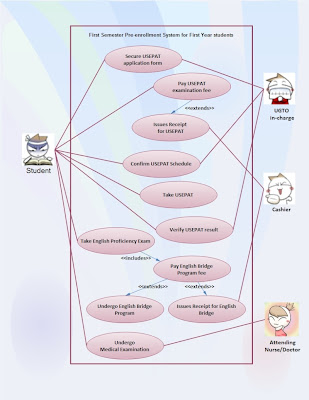Assignment #1 - Best Practices in IT/IS
Assignment #1
Identify a local organization(s) and discuss some of their best practices in IT/IS ... this should be well-supported with any evidences.Before I would discuss about the best practices in IT/IS of our adopted company, here is a brief company background of DOLE for this assignment.
DOLE Philippines
Company Background
Company Background
Dole is the world's largest producer and marketer of high-quality fresh fruits, fresh vegetables and fresh cut flowers with a growing line of quality packaged foods. Dole’s dedication to quality is a commitment solidly backed by: comprehensive programs for food safety, scientific crop protection programs, stringent quality control measures, state-of-the-art production and transportation technologies, continuous improvement through research and innovation, and dedication to the safety of our employees, communities and the environment. Dole is committed to nutrition education to communicate to the public the health benefits of eating a diet rich in fruits and vegetables.
In the Philippines, Dole has introduced premium quality, healthy food products in fresh and packaged foods. Its focus on health and nutrition remains strong even as Dole continues to expand its healthy food products. Its product lines range from canned pineapple solids, canned mixed fruits, canned beverages, packaged fruit snacks to tomato sauce.
In the Philippines, Dole has introduced premium quality, healthy food products in fresh and packaged foods. Its focus on health and nutrition remains strong even as Dole continues to expand its healthy food products. Its product lines range from canned pineapple solids, canned mixed fruits, canned beverages, packaged fruit snacks to tomato sauce.
Source: http://www.dole.com.ph/CompanyInfo.htm
The Company hunting..
Honestly speaking, DOLE Philippines was not actually our first choice as the company to feature in our first assignment.
Last Wednesday, the original plan of our group was to interview the assistant of the IT manager of the AMA Computer College. He agreed to have an informal interview outside their school because outsiders were not allowed in their campus. But due to an unexpected circumstance he was not able to meet us and therefore will have to cancel our appointment.
The plan B was to interview one of the IT personnel of the Department of Social Welfare and Development or DSWD where one of our group mate works. The DSWD needed a formal letter signed by our instructor to accommodate us. Unfortunately, sir Randy did not approved our chosen organization and deliberately specified that if possible that we should adopt a private company to have a more meaningful learning experience.
And so the search goes on…
Fortunately, thanks to Anthony’s connection, one of the MIS programmer of the DOLE Philippines agreed to meet us at SJRDC Building, Lanang and answer our questions concerning our assignment. Hurray!
Based on our interview last Thursday with one of MIS programmer of DOLE Philippines, here are the best practices in IT/IS that I picked out..
1. Provide Backups and Recovery Plans in any system or project.
This is probably one of the most common and most important thing to consider when creating, implementing or on the process of maintaining a system. Backups and Recovery Plans allow the company to have an assurance that the data will not be lost in case the systems accidentally fail.
She mentioned that if you’re an IT personnel, it is practically a rule of thumb to backup everything that you are working on.
2. Annual Training for all IT personnel.
As far as I could remember during our HRM discussions last semester, Training is a must-do for human resource development.
Based on what I understood on what our interviewee said, training of human resources (especially IT personnel) will help refresh or update them with the necessary skills and technical development on their field. Their newly acquired learning and skills will help them make more effective systems in the future and therefore will make them a great asset for the company’s development in general.
3. Thorough System Analysis.
Before making any system for the company, thorough system analysis is very important because this is the stage of the system development where IT pipz answer crucial questions like What specific kind of system does the company need? Or Do we really need to make a new system or just an upgrade?
This is because improperly analyzed and poorly planned systems may result to inefficient and impractical systems which can be a liability instead of an asset for the company.
Included in this protocol is the extensive and thorough planning and budgeting for their system or project especially during a system change.
4. Testing of Systems.
One of their standard procedures after the development of a system is the methodical and meticulous testing of the system in order to (as much as possible) reduce the margin of error.
5. Having an internal IT personnel rather than outsourcing.
According to our interviewee, the DOLE Philippines does not outsource IT people but rather they have their own IT personnel who will make and maintain their systems.
In her opinion, the advantages o f having internal IT in a company are
First, if you would calculate the cost when it comes to hiring IT/IS personnel, having your own internal IT personnel is cheaper in the long run compared to outsourcing.
And second, it is more flexible in a sense that internal ITs can make systems according to their company’s need unlike when outsourcing where it is standardized based on the trend in the market.
PS.
Sir, our interview is supported with a recorded evidence. cheers.

Comments